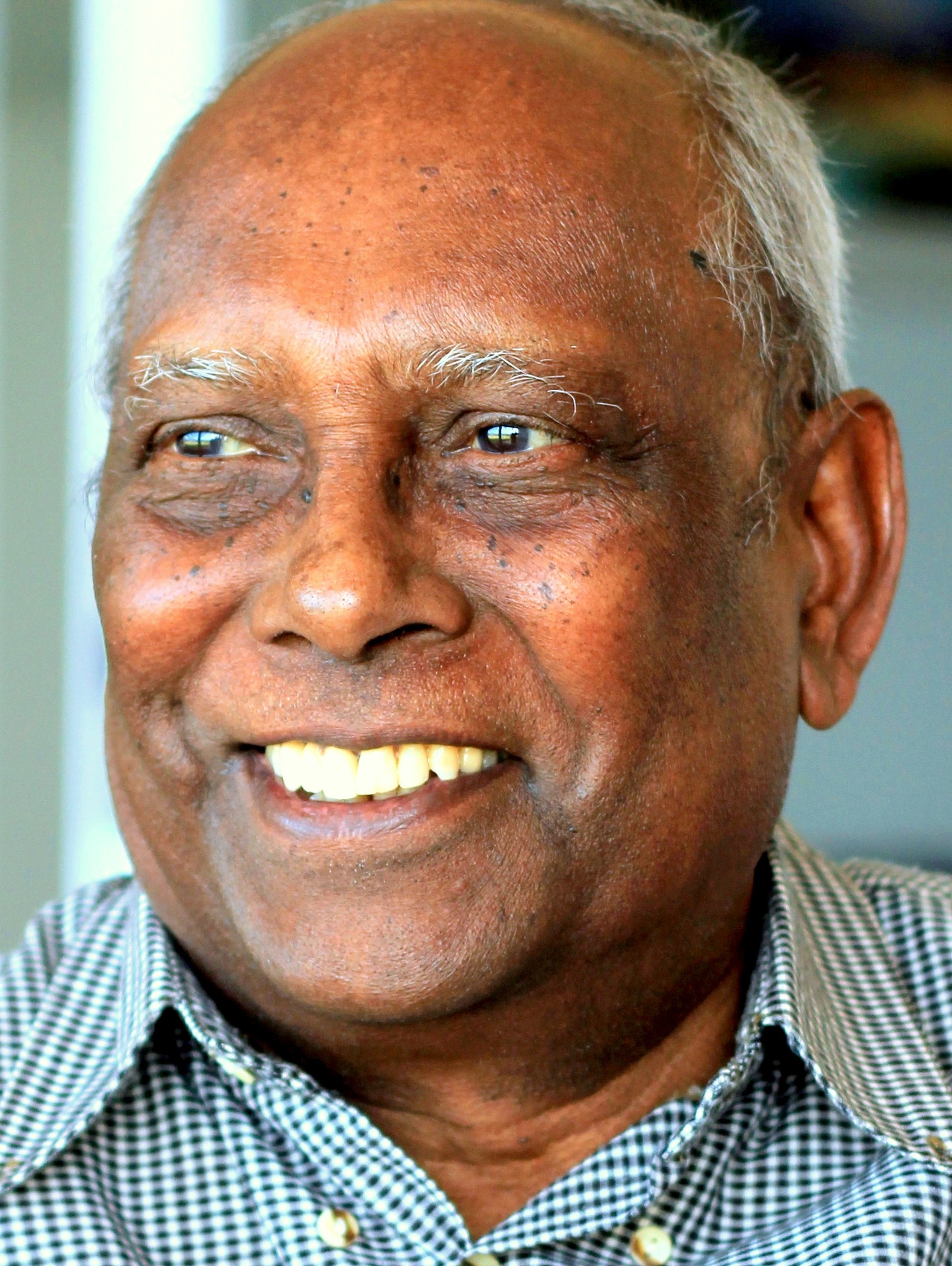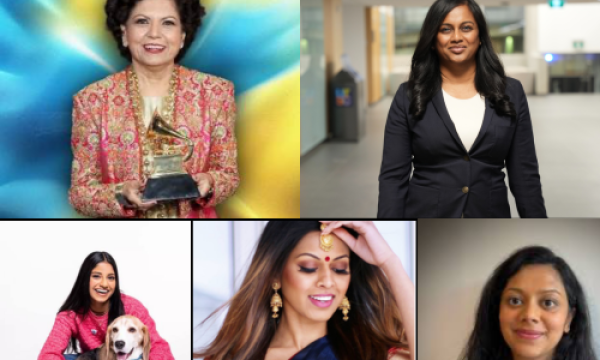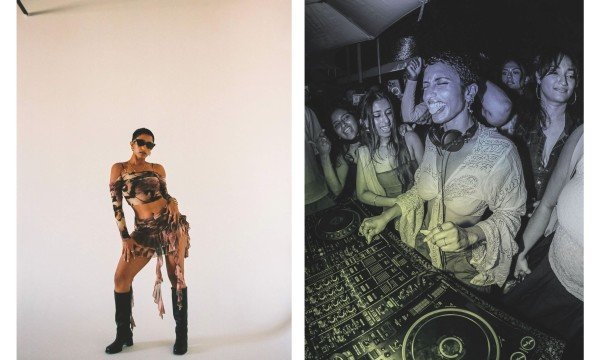
I was 14 and in a queue, waiting outside the family butchery in Clairwood, south of Durban, South Africa, when a woman I knew by sight commented: “You are dark but handsome.” Like an Indian doll, I shook my head. No comment.
I did not know anything about being dark or fair or handsome. I was just a hick living in a 50,000 strong sheltered Indian community. No one thought or spoke of skin colour. We belonged to one big family bound not by colour but by brother and sisterhood. Ours was an isolated community – isolated from communities who thought in terms of melanin.
Fast forward: It was many years later when confronted with Caucasians in my country. The question of colour arose as a result of being referred to as darkies, blacks, coolies, bruin ous, etc. It dawned on us that we were dusky and different to the self-proclaimed master class.
It was only then that I realized that my closest friend was very fair. That in my teenage group we were of different hues. Soon, I was seeing Fifty Shades of Black. But this did not affect our friendship in any way. In my family of 11 siblings, skin colour ranged from olive to chocolate brown.
Clairwood was known as Little India, reflecting people whose origins were from every part of India stretching north to south. No one thought of themselves as tribal or in terms of colour. All lived as part of one big family. Here, friends were just friends and marriage partners reflected a range of complexions. No one cared. Skin colour varied from that of kohl to almost Caucasian.
The modern obsession with colour is clear from many Indian advertisements in the media and on billboards:
“Boy: South Indian. Fair and of medium height, engineering degree from MIT. Seeks a fair Tamil girl as bride. Preferably a graduate."
Many young women are subjected to comments such as, “She is so fair and beautiful” or “It doesn’t matter that she is dark, she is still pretty.”
Large billboards throughout India say it all – advertisements promoting skin lightening cream previously targeting women are now aimed at men. In India, the skin cream Fair and Lovely is supplemented by a Fair and Handsome product aimed at men.
Recently, a Dove soap advertisement used a 3 panel graphic showing a dark skinned person changing into a Caucasian after using Dove soap.
Former beauty queen and actress Sorisha Naidoo claims her products have sold out since pictures of her “new fair self” appeared in newspapers. She is referring to her skin colour. Naidoo’s product is Pure Perfect.
Skin lightening creams, now frowned upon in the local African community, were fashionable in the 1970s and 1980s. They fell out of favour because of disastrous face scarring and skin patches caused by certain brands of cream. (Niyanta Singh: The Dark Side of Skin Lightening: BEAUTY / 21 July 2011)
A Brazilian artist who has been photographing skin colour since 2012 found that the range was greater than the 1867 hues on the pantone colour card. Also note that in an artist's colour wheel there is no black - it is not a colour but just the absence of light on an object.
In the US, Shankar Vedantam (2010) writes, "… Senate Majority Leader Harry Reid found himself in trouble for once suggesting that Barack Obama had a political edge over other African-American candidates because he was “light skinned”. Harvard neuroscientist Allen Counter has found that in Arizona, California and Texas, hundreds of Mexican-American women have suffered mercury poisoning from the use of skin-whitening creams."
The obsession towards lighter skin in India, South Africa and the USA must have a basis. Some refer to the effects of colonization and slavery that resulted in the perception that success comes to those who are fair.
The adjective “black” has many has negative connotations. In the English language, “black” is used in a negative manner: darkness, fear, death, evil, unknown, foreboding, intimidation, villain, grief and mystery. Think of Black Death, Black holes, Blackguard, Black humour, Blacklist etc.
Vedantam refers to “colourism”, an unconscious prejudice that isn’t focused on a single group like blacks so much as on blackness itself. Our brains, shaped by culture and history, create intricate caste hierarchies that privilege those who are physically and culturally whiter and punish those who are darker. Bollywood movies are a case in point.
Some researchers trace the obsession with fair skin to the colonial era. The subservient, the vanquished, the indentured and slaves had the perception that the nose shape of Nicole Kidman and George Clooney of the fairer master race reflected success and power and were therefore desirable.
Prejudice based on colour is not only an inter-racial problem. Colourism, defined as prejudice or discrimination against individuals, is an intra-racial problem as well as an interracial problem. Racial minorities who are alert to white-black or white-brown issues often remain silent about colourism that asks “how black” or “how brown” someone is within their own communities. In some countries, the lighter skinned Coloureds (mixed race) discriminate against those who are darker.
On the issue of colour and success, one can name a string of successful singers and actresses. On the fashion ramps names such as Padma Lakshmi, Iman, Grace Jones and Shivam Persad come to mind. In the movies we have Lupita Nyong’i, Nundita Das and Halle Berry. Recently an Indian fashion designer, Ayushkar Jriwal, challenged India’s obsession with fair skin by showcasing only dusky models from the south of India in a very successful fashion event.
In India, where light skin is coveted, a new campaign was launched through re-imaging of gods and goddesses by using models with darker skin. The exercise produced superlative results - the rich textured skin tones undoubtedly gave the subjects a new dimension without detracting from long-held perceptions of the pantheon of the divine.
From the foregoing there is some resolution to the long-standing melanin battle. But more must be done. The vicious circle of white skin is better than the darker type can only be broken in the home. It’s a question of changing mental states by drumming in the mantra “Black is Beautiful”. Children do not see colour nor race; in their innocence, they only see people. Prejudice is a learned behavior and it is our responsibility not to pass on our learned patterns of colourism.
The writer – whose natural dusky sunburnt skin typical of the South Indian – has never had problems with success both in the social world and in the workplace. He enjoyed a very successful career and was seldom spurned by the fairer sex because of his colour. The inner self driven not by colour but by self-confidence and deep-seated values wins the day.
Up to this point, if you are still unhappy with your chocolate brown, sunburnt skin colour, remember that the fair-skinned population of the north were your colour and even darker when they migrated from Africa. This is confirmed by recent research (Ann Gibbons: New gene variants reveal the evolution of human skin colour: Science. Oct 12, 2017). There is also conclusive evidence that the ancestors of the British were swarthier than you.
Watch the following YouTube presentations: “Dark Skin is Beautiful" by fashion designer, Ayushkar Jriwal and a comedy entitled "Dark Skinned and Indian".
- Jagadesan Pather
Author, Journalist, Blogger and Indian heritage Conservationist
Hon Director: 1860 Heritage Centre
Durban, South Africa
Note: He writes in his personal capacity

























